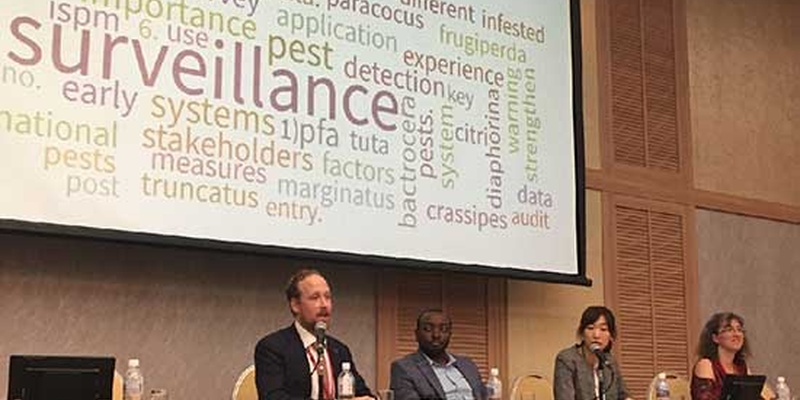The IPPC International Symposium for Pest Free Areas PFAs) and Surveillance
Posted on Tue, 29 Oct 2019, 09:10

The IPPC International Symposium for Pest Free Areas PFAs) and Surveillance is taking place in Shizuoka Japan. © FAO
28 October 2019, Shizuoka, Japan - The IPPC International Symposium for Pest Free Areas (PFAs) and Surveillance is taking place from 28 October to 1 November 2019 in Shizuoka, Japan. The symposium brings together the world's phytosanitary community to discuss these important topics. An important new Guide for Establishing and Maintaining Pest Free Areas has also been released to help International Plant Protection Convention (IPPC) contracting parties implement PFAs.
The main objectives of the symposium are to:
-
Raise awareness of:
-
The international phytosanitary framework for PFA and Pest Surveillance.
-
Resources for implementing the IPPC - with an emphasis on the PFA and Pest Surveillance related materials.
-
The IPPC and the International Year of Plant Health (IYPH) 2020.
-
-
Provide a platform for presenting and promoting specific PFA and Pest Surveillance initiatives.
-
Generate ideas for national and global capacity development strategies on PFAs and Pest Surveillance.
-
Reinforce partnerships and collaboration between IPPC contracting parties, regional plant protection organizations and different stakeholders at the national, regional and global levels.
The symposium has been organized by the IPPC Secretariat in close cooperation with the Steering and Technical Committees. Financial support has been provided by Agriculture and Agri-Food Canada (AAFC); the European Commission (EC); and the Ministry of Agriculture, Forestry and Fisheries of Japan (MAFF). The symposium is hosted by MAFF.
To find out more, please see: https://www.ippc.int/en/core-activities/capacity-development/symposia/symposium-on-pfas-and-surveillance/
Guide for Establishing and Maintaining Pest Free Areas
The guide supports national plant protection organizations (NPPOs) who wish to establish and maintain PFAs - including places and production sites (PFPP and PFPS) as well as areas of low pest prevalence (ALPPs). It will provide users with a better understanding of phytosanitary standards related to PFAs and ALPPs by providing technical information and best practices from around the world.
This practical guide includes case studies and a “decision tree” that outlines five programme development phases: initiation, feasibility, establishment, maintenance, and market access.
Download the guide at: http://www.fao.org/3/ca5844en/CA5844EN.pdf
Expected outputs of the symposium
Expected outputs of the symposium include:
-
participants will become more aware of PFA and Surveillance frameworks;
-
an action plan to follow up on the outcomes of the symposium will be developed;
-
a draft outline of national and global capacity development strategies for PFAs and Pest Surveillance programmes will start being prepared;
-
a collection of materials to facilitate the implementation of the IPPC and develop contracting parties’ phytosanitary capacity will begin to be developed; and
-
an Implementation and Review Support System (IRSS) study on the challenges and successes of the implementation of PFAs will also be developed.

Participants at the IPPC International Symposium for Pest Free Areas (PFAs) and Surveillance. © FAO

